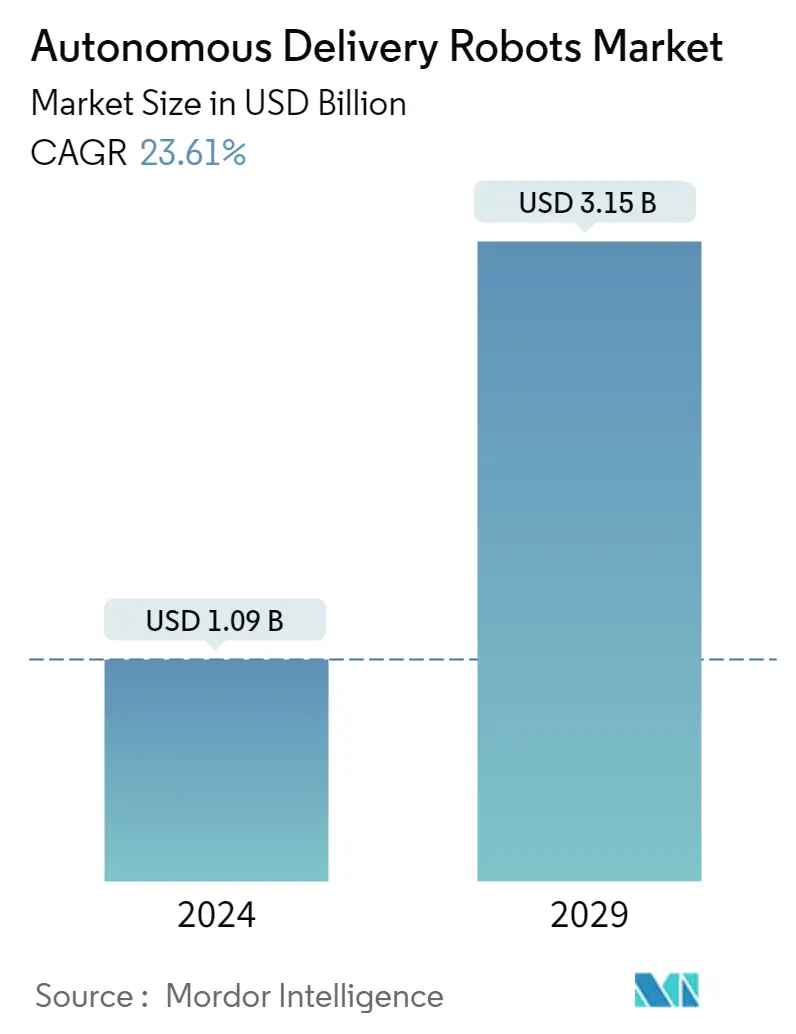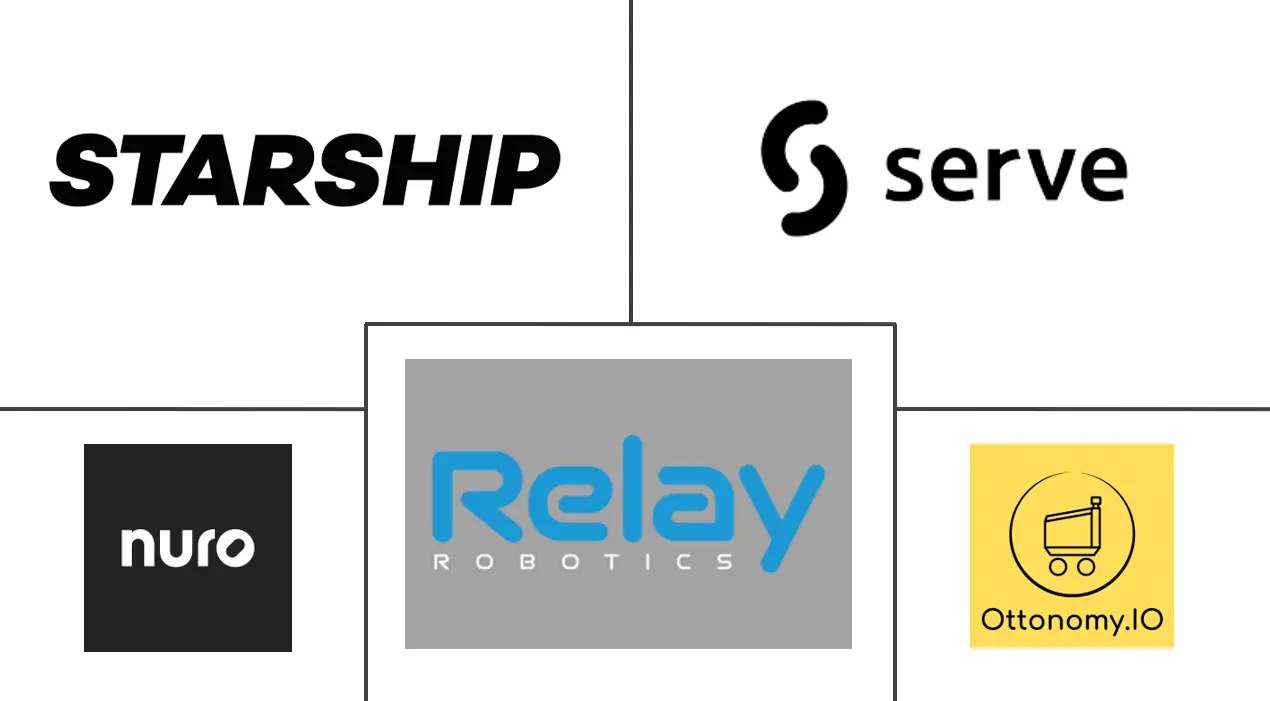Market Size of Autonomous Delivery Robots Industry

| Study Period | 2021 - 2029 |
| Market Size (2024) | USD 1.09 Billion |
| Market Size (2029) | USD 3.15 Billion |
| CAGR (2024 - 2029) | 23.61 % |
| Fastest Growing Market | Asia Pacific |
| Largest Market | North America |
Major Players
*Disclaimer: Major Players sorted in no particular order |
Need a report that reflects how COVID-19 has impacted this market and its growth?
Autonomous Delivery Robots Market Analysis
The Autonomous Delivery Robots Market size is estimated at USD 1.09 billion in 2024, and is expected to reach USD 3.15 billion by 2029, growing at a CAGR of 23.61% during the forecast period (2024-2029).
The increasing use of autonomous delivery automobiles due to their efficiency is the primary element contributing to the Market's growth. In January 2022, Ottonomy launched Ottobots, a fleet of fully autonomous delivery robots for restaurant and retail industries for outdoor and indoor environments. The pandemic provided Ottobots with a catalyst enabling a series of partnerships that allowed it to launch fully autonomous delivery for curbside, indoor, and last-mile deliveries.
- Autonomous delivery robots (ADR) have revolutionized delivery procedures, providing a cheaper and more efficient way of delivery. Though delivery robots did not experience high adoption in the past, they are expected to notice increased growth in the future, owing to numerous advantages. The increasing adoption of ADR is mainly driven by the growing affordability and return on investment of a rising variety of infrastructure light robots, along with continuing needs for flexible and efficient automated fulfillment. For instance, in January 2022, Starship Technologies, a significant player in autonomous delivery robots, picked up EUR 50M from the European Union (EU) investment arm to extend its fleet of autonomous delivery robots.
- AI and ML have also greatly benefited the food processing industry, eateries, restaurants, and diners. These technologies, among other things, have sped up the supply chain process and enhanced food delivery services.
- Furthermore, last-mile delivery has been one of the primary problems in handling the supply chain. Last-mile deliveries are getting increasingly complicated in cities, as continued growth in e-commerce and high consumer expectations for faster and regular deliveries are causing traffic congestion and increased carbon pollution. According to the World Economic Forum, the need for last-mile delivery is predicted to grow by 78% globally by 2030
- Losses of about USD 333m incurred due to shipping mishaps, according to the National Retail Federation (NRF). Due to such delivery issues, various consumers and retailers have been looking for better and more efficient delivery methods.
- Also, many retailers have discovered that a superior last-mile experience engages and retains consumers. However, at the same time, meeting customers' delivery expectations does not assist in increasing profit margins, as today's retailers are soaking a part of the cost of last-mile delivery. Therefore, ADR is helping these companies in achieving efficient last-mile delivery.
- Moreover, the logistics sector consumes several natural resources to sustain different operations, such as the delivery of goods. This has also contributed to global warming by disposing of large amounts of greenhouse gases into the atmosphere. Autonomous delivery systems are anticipated to counter such anti-environmental effects by reducing CO2 emissions in the atmosphere.
- Multiple laws are being put in place to control global warming and protect the environment; such initiatives undertaken by governments contribute to the demand growth of ADRs in the Market. For instance, the European Commission has set an objective of decarbonization by 2050, with a few immediate goals in 2020 and 2030.
- Moreover, the government of Delhi recently shared a draft that mandates EVs to cab aggregators, food delivery firms, and E-commerce platforms by 2030. As per officials, the government aims to increase the EV share in overall vehicle sales to 25% by the year 2024. Such activities may further hamper the growth of delivery robots in the Market.
- The COVID-19 pandemic focused attention on delivery robots for contactless package deliveries worldwide, and strong market demand has pushed delivery robot developers to launch large-scale operations in several US cities. The deployment and adoption of delivery robot technology are anticipated to strengthen the Market for delivery robots in the forecasted period. Increasing logistic and healthcare spending worldwide may further drive market growth. According to WHO, the global current health expenditure as a share of the GDP is forecasted to increase between 2023 and 2028 by 0.2% points, and the share is estimated to amount to 10.81% in 2028.
